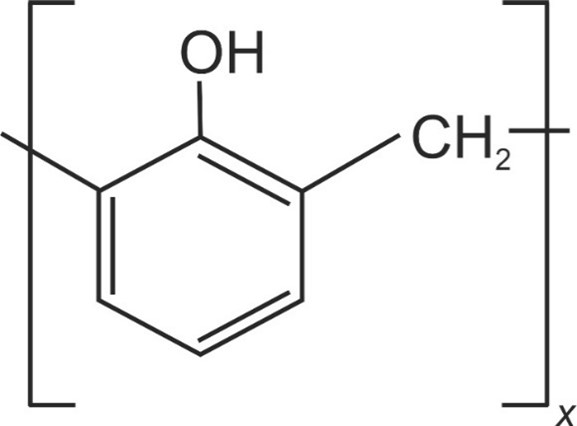Treatment of Kynol fiber materials – Part 2: antistatic and water-repellent functionalization
DOI:
https://doi.org/10.25367/cdatp.2022.3.p62-71Keywords:
Kynol fiber, Novoloid fiber, High performance fibers, antistatic, water-repellent, hydrophobic, double functional finishingAbstract
Kynol fibers are flame retardant high performance fibers. Without further treatment they do not exhibit significant antistatic or water-repellent properties. With this background, several conventional antistatic agents and one hydrophobic finishing agent are evaluated to introduce these properties to Kynol fiber materials. Also, the combination of both properties is investigated to realize bifunctional fiber materials. By application of antistatic finishing agents, the electric surface resistance of Kynol fiber materials can be decreased to values smaller 108 W, which is a good value related to antistatic properties. By application of the hydrophobic agent, water repellent properties can be introduced to Kynol fiber materials. However, simultaneously the antistatic properties are decreased. The combination of both types of agents in a kind of bifunctional finishing can lead to intermediate antistatic effects combined with an intermediate water repellency. Nevertheless, in bifunctional application no single excellent property is gained. The flame retardant properties are tested on selected samples after the finishing processes. No change in flame retardant properties is determined, if the finishing agents are applied. For this, the presented results can be the starting point for development of functionalized flame retardant Kynol fiber products.
References
Hayes, J. S. Kynol Novoloid Fibers in Friction and Sealing Materials. J. Industrial Textiles 2000, 30, 103-127. DOI: 10.1106/NB17-452X-AR60-LT3C.
Rallini, M.; Puri, I.; Torre, L.; Natali, M. Effect of liquid resol on the mechanical and thermal properties of EPDM/Kynol elastomeric heat shielding materials. Polymer Engineering & Science 2017, 57, 513-520. DOI: 10.1002/pen.24513.
Borgstädt, T.; Mahltig, B. Laser treatment of high-performance Kynol fibers: An example as alternative tool for coloration and imaging on surfaces of high-performance fibers. Tekstilna Industrija 2020, 68, 4-9.
Mahltig, B. High-Performance Fibres – A Review of Properties and IR-Spectra. Tekstilec 2021, 64, 96-118. DOI: 10.14502/Tekstilec2021.64.96-118.
Brown, J. R.; St John, N. A. Fire-retardant low-temperature-cured phenolic resins and composites fire-retardant low-temperature-cured phenolic resins and composites. Trends Polym. Sci. 1996, 4, 416-420.
Bahta, H.D.; Hazelet, G.J. Process for manufacturing novaloid fiber, US4076692, 1976.
Jakubke, H.-D.; Jeschkeit, H. Concise Encyclopedia Chemistry; Walter de Gruyter, Berlin, 1993.
Mahltig, B.; Grethe, T. High-performance and functional fiber materials — a review of properties, scanning electron microscopy SEM and electron dispersive spectroscopy EDS. Textiles 2022, 2, 209-251. DOI: 10.3390/textiles2020012.
Chiantese, G. Fabric with high fire-resistant properties, WO2004/076730A2, 2003.
Hockmeyer, P.F. Light-weight durable fire-entry fabric and suit, US4473614, 1982.
Economy, J.; Frechette, F.J.; Wohrer, L.C. Flame resistant cloth, US4001477, 1973.
Fantino, R. Layered product with high thermal insulation and self-extinguishing capacity, EP2147781A1, 2009.
Kynol Europe GmbH. 2022. Product data sheet on Kynol Novoloid Fibers. Retrieved January 13, 2022 from http://www.kynol.de/pdf/kynol_flyer_en.pdf.
Shishoo, R. Recent developments in materials for use in protective clothing. International Journal of Clothing Science and Technology 2002, 14, 201-205. DOI: 10.1108/09556220210437167.
Loy, W. Chemiefasern für technische Textilprodukte; Deutscher Fachverlag, Frankfurt am Main, 2008.
Economy, J.; Lei, G. Y. Dyeing novoloid fibers with disperse dyes, US3942947A, 1974.
Economy, J.; Lei, G. Y. Anionic dyeing of novoloid fibers, US3993442A, 1974.
Economy, J.; Lei, G. Y. Cationic dyeing of novoloid fibers, US3967925A, 1974.
Parker, R. B. Process for dyeing of novoloid fibers, US3929407A, 1974.
Wang, J.; Mahltig, B. Treatment of Kynol fiber materials – Part 1: dyeing processes. Communications in Development and Assembling of Textile Products CDATP 2022, 3, 17-27. DOI: 10.25367/cdatp.2022.3.p17-27.
Mahltig, B.; Textor, T. Nanosols and Textiles; World Scientific Publishing, Singapore, 2008.
Mather, R. R.; Wardman, R. H. The Chemistry of Textile Fibres; RSC Publishing, Cambridge, 2011.
Oxenham, W.; Jasti, V. K.; Seyam, A.-F. M.; Theyson, T. Electrostatic charge generation and buildup during contact and frictional electrification of woven textile fabrics. Indian Journal of Fibre & Textile Research 2019, 44, 411-419.
Zhang, X. Antistatic and conductive textiles. In Functional Textiles for Improved Performance, Protection and Health; Pan, N.; Sun, G., Eds.; Woodhead Publishing, Cambridge, 2011; pp. 27-44. DOI: 10.1533/9780857092878.27.
Sayed, U.; Sharma, K. Development of antistatic finish in textiles. Int. J. Adv. Sci. Eng. 2015, 2, 69-74.
Teli, M. D. Finishing of carpets for value addition. In Advances in Carpet Manufacture; Goswami, K. K., Ed.; Elsevier, 2018; pp. 175-211. DOI: 10.1016/B978-0-08-101131-7.00010-1.
Bahners, T.; Textor, T.; Opwis, K.; Schollmeyer, E. Recent Approaches to Highly Hydrophobic Textile Surfaces. J. Adhesion Sci. Technol. 2008, 22, 285-309. DOI: 10.1163/156856108X295437.
Mahltig, B.; Tatlises, B.; Fahmi, A. Dendrimers for the functionalisation of textiles. In Dendrimers: Synthesis, Applications and Role in Nanotechnology; Harris, H. B.; Turner, B. L., Eds.; Nova Science Publishers Inc., New York, USA, 2013; pp. 229-248.
Mahltig, B. 2015. Hydrophobic and oleophobic finishes for textiles. In Functional Finishes for Textiles; Paul, R., Ed.; Woodhead Publishing, Cambridge, UK, 2015; pp. 387-428. DOI: 10.1533/9780857098450.2.387.
Textor, T. Modification of textile surfaces using the sol-gel technique. In Surface modification of textiles; Wei, Q., Ed.; Woodhead Publishing, Cambridge, UK, 2009; pp. 185-213. DOI: 10.1533/9781845696689.185.
Wilson, N. The risk of fire or explosion due to static charges on textile clothing. Journal of Electrostatics 1977, 4, 67-84. DOI: 10.1016/0304-3886(77)90109-7.
Jastorff, B.; Störmann, R.; Wölcke, U. Struktur-Wirkungs-Denken in der Chemie – eine Chance für mehr Nachhaltigkeit; Universitätsverlag Aschenbeck & Isensee, Oldenburg, 2003.
Türk, M.; Ehrmann, A.; Mahltig, B. Water-, oil-, and soil-repellent treatment of textiles, artificial leather, and leather. The Journal of The Textile Institute 2015, 106, 611-620. DOI: 10.1080/00405000.2014.931108.
Jonas, A. M.; Cai, R.; Vermeyen, R.; Nysten, B.; Vanneste, M.; Smet, D. D.; Glinel, K. How roughness controls the water repellency of woven fabrics. Materials & Design 2020, 187, 108389. DOI: 10.1016/j.matdes.2019.108389.

Downloads
Published
How to Cite
Issue
Section
License
Copyright (c) 2022 Juan Wang, Boris Mahltig

This work is licensed under a Creative Commons Attribution-NonCommercial-NoDerivatives 4.0 International License.





